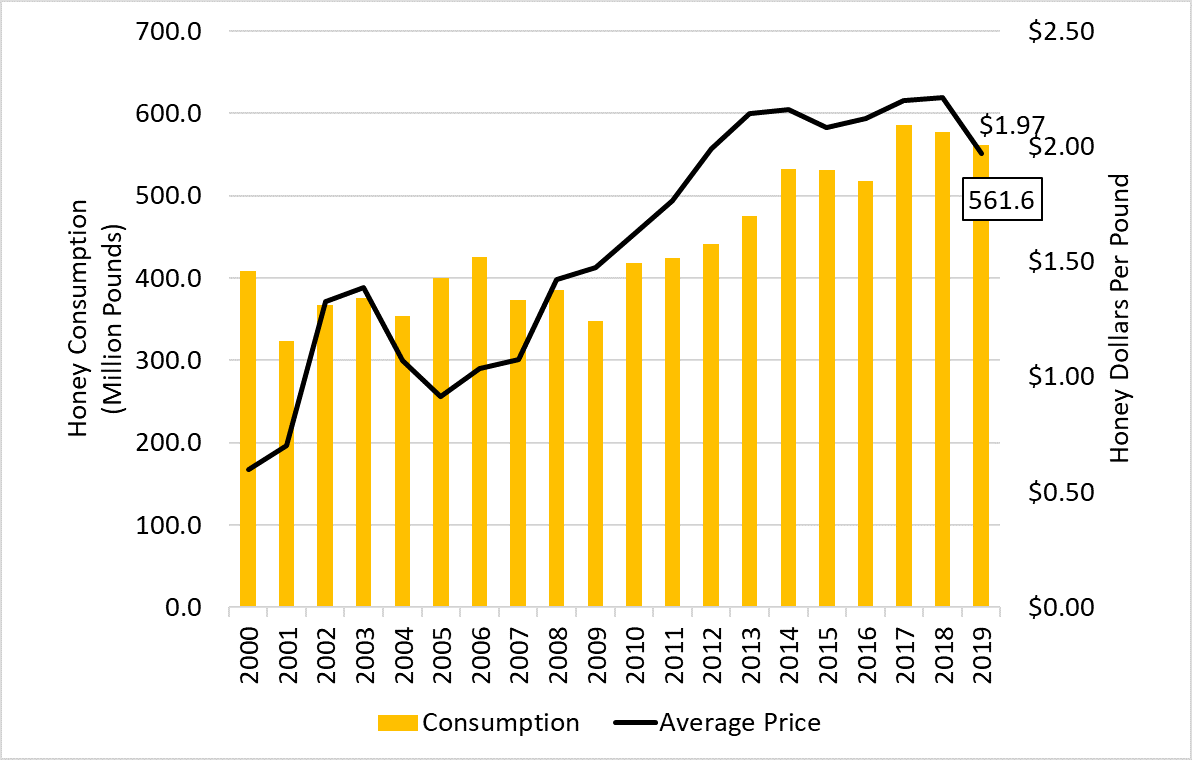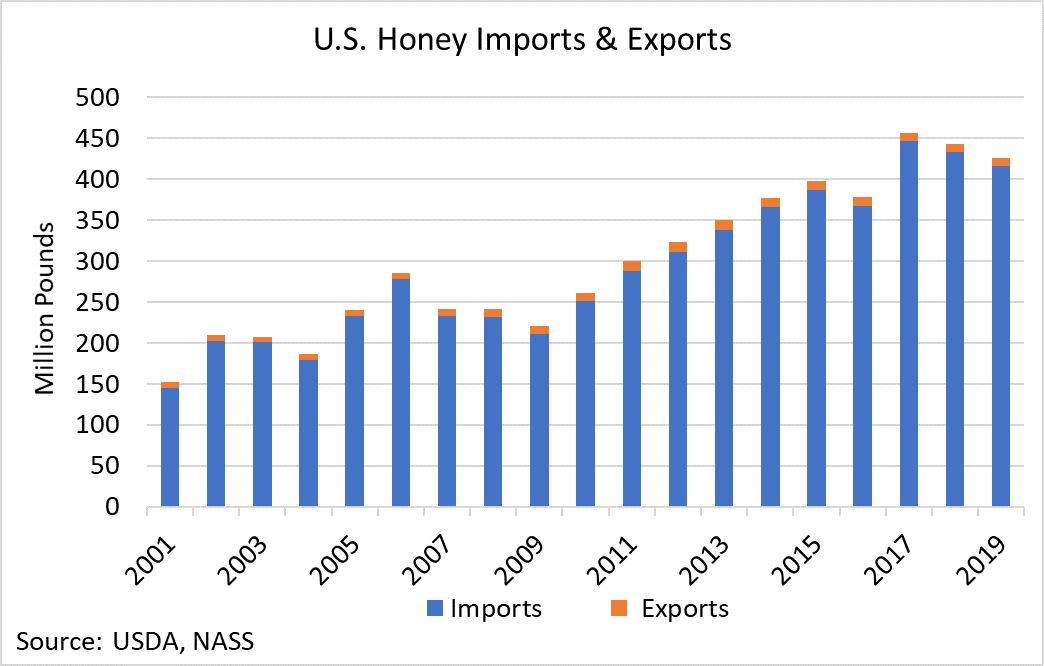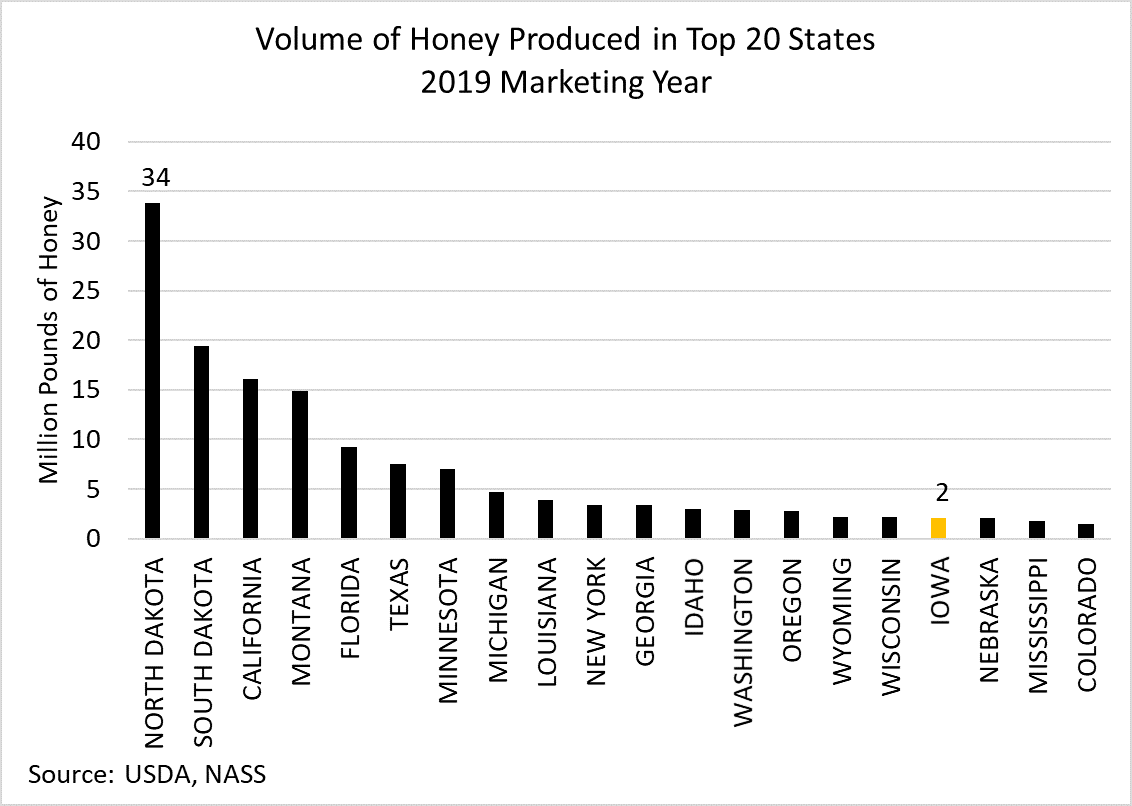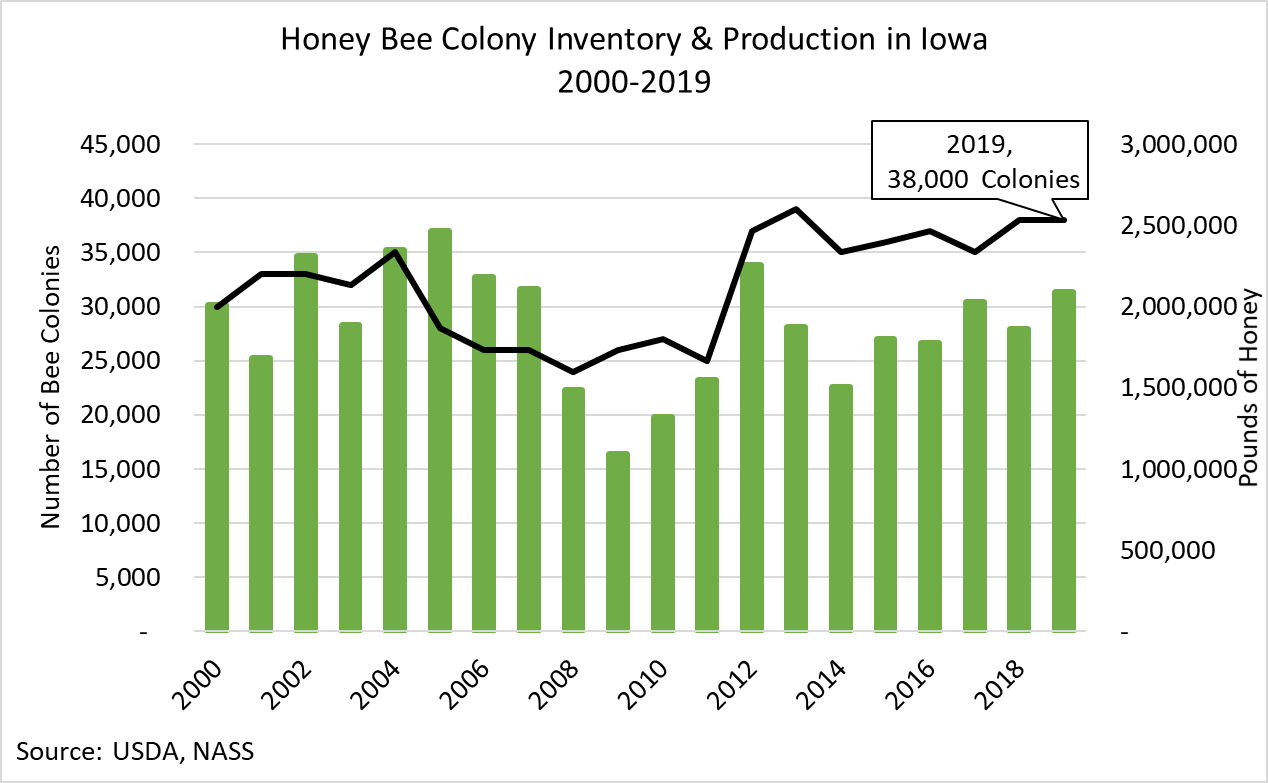One honeybee only makes 1/12 a teaspoon of honey in its lifetime, but the honeybees’ products and service as a pollinator are all but minuscule. Honeybees are responsible for pollinating over 90 commercial U.S. crops including almonds. Other products produced by honeybees include beeswax, royal jelly, and venom. The low barriers to entry and exit of the honeybee production industry make it ideal. The USDA reported 2.81 million honeybee colonies in the U.S.in 2019 and a yield of 157 million pounds of honey.
Honey consumption and honey price patterns in the U.S. slowly followed the general trend upward. Total consumption of honey in 2019 was 514 million pounds compared to 418 pounds in 2010. (See Figure 1). Local and specialty honeys have proven to attract a strong market as consumers reach for alternative forms of sweeteners. U.S. per capita consumption of honey in 2019 was approximately 1.7 pounds per person. In 2000, about 49% of honey consumed in the U.S was imported. By the year 2019, about 74% of honey consumed in the U.S. was imported (See Figure 2).
Figure 1 U.S. Honey Consumption & Average Dollars per Pound of Honey

Figure 2 U.S. Honey Imports, Exports, & Production

Iowa’s Honey Industry
There were 41 states in 2019 which reported honey production. Iowa was among the top 20 in volume of honey produced. In 2017, Iowa’s 614 honey operations produced approximately 2 million pounds of honey (See Figure 3), and sales totaled to $3.7 million. USDA Census data shows the number of honey operations with sales in Iowa more than doubled between 2012 and 2017 but sales decreased 17% from 2012.
Figure 3 2019 Volume of Honey Produced in Top 20 States

Iowa, as have many other states, experienced bee colony declines for a few years. Colony Collapse Disorder (CCD) challenged bee colony inventory numbers in the U.S. beginning in 2006 and continues to be a concern for beekeepers. Varroa mites have also wreaked havoc across the U.S. on colony numbers. According to the Food and Agriculture Organization of the United Nations (FAO), changes in land use, bee habitat, and agricultural practices are among a few causes in bee colony decline. Figure 4 shows Iowa colony numbers at about 38,000 which is more than 10,000 colonies higher than 2012’s decade low. It appears Iowa beekeepers’ efforts to sustain honeybee production is working.
Figure 4 Honey Bee Colony Inventory & Production in Iowa

Honeybees are vital for the world’s agriculture production. The service that honeybees provide, whether pollinating plants or providing beeswax for candles, has made our lives much more comfortable. Therefore, taking measures to protect bees from threats to their environment is necessary to ensure food sustainability across the globe.

